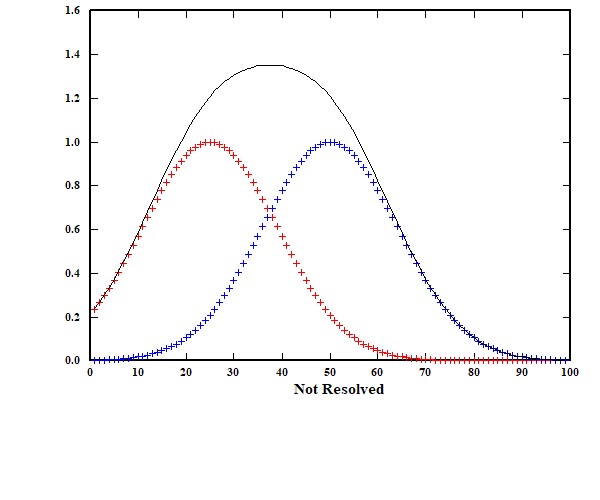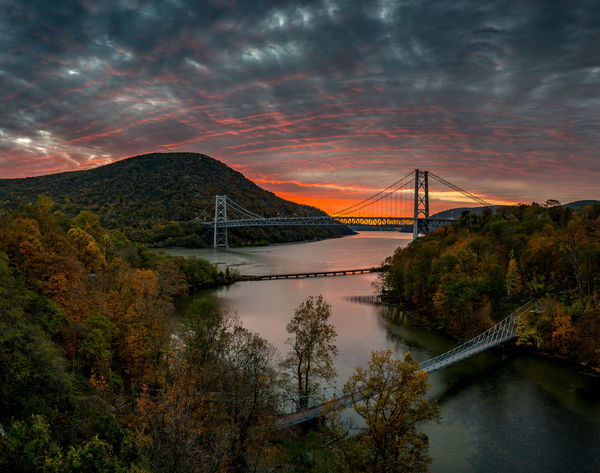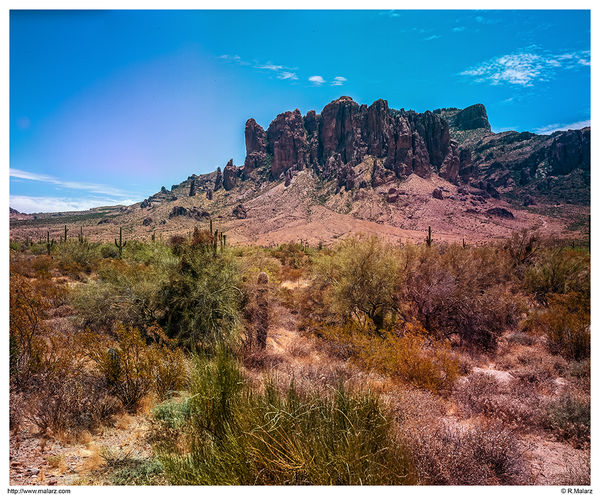Megapixels, resolution, lens, blah, blah....????
Nov 15, 2020 15:26:43 #
Okay, somewhat of a newbie here.....
Sony 24 megapixel (mp) camera. I just discovered, duh, by stitching an array of 4 images, a horizontal row, on top of another horizontal row I get an image with far more than 24 mp. My quicky test of two rows of 2 images each (lots of overlap) yielded a 70 mp image in Affinity Photo. 135 mm Canon lens on my Sony shooting a wall 20 feet away.
For discussion, the question is, how is this different than if I had a camera with a 70 mp capability?
And, what about lenses? The mythical 70 mp camera with a 135 mm lens, would the resolution be the same?
For that matter, exactly what is resolution?
Sony 24 megapixel (mp) camera. I just discovered, duh, by stitching an array of 4 images, a horizontal row, on top of another horizontal row I get an image with far more than 24 mp. My quicky test of two rows of 2 images each (lots of overlap) yielded a 70 mp image in Affinity Photo. 135 mm Canon lens on my Sony shooting a wall 20 feet away.
For discussion, the question is, how is this different than if I had a camera with a 70 mp capability?
And, what about lenses? The mythical 70 mp camera with a 135 mm lens, would the resolution be the same?
For that matter, exactly what is resolution?
Nov 15, 2020 15:32:22 #
Nov 15, 2020 15:52:34 #
[quote=SonyDoug]...For discussion, the question is, how is this different than if I had a camera with a 70 mp capability?...
If you had a camera with a 70 mp capability you would be broker than you are now.
Resolution is the distance between lines that are far enough apart that you can tell that they are separate lines. The figures show two lines (red and blue crosses) and the sum, which is what the sensor would see.
If you had a camera with a 70 mp capability you would be broker than you are now.
SonyDoug wrote:
...For that matter, exactly what is resolution?
Resolution is the distance between lines that are far enough apart that you can tell that they are separate lines. The figures show two lines (red and blue crosses) and the sum, which is what the sensor would see.



Nov 15, 2020 16:00:53 #
Pixel resolution of a digital image is always the total number of pixels, as expressed in pixels or mega pixels (MP). The calculation is simply the pixel-length * pixel-width / 1,000,000 = megapixels.
The image may have more megapixels due to the density of the sensor, but the field of view is the same for a given position and lens / focal length and sensor format. That is: compare full-frame to full-frame or 1.5 crop to 1.5 crop, etc.
So, if you stand at position 'x' and capture a subject at 'y' distance with the same lens at the same focal length with the same format camera (i.e., both full-frame), the more pixels provide the following options:
1) You can print a larger print-size at the same ppi (pixel per inch) resolution.
2) You can crop into the details of the image file and obtain a larger (or same) print from the larger pixel file than the smaller.
Example: 24MP image (6000x4000). If you want to print at 300ppi, this would print to 20x13-inches. The same image (same location, same distance, same focal length, sensor format) with a 54MP camera (9000x6000) would print to 30x20-inches at the same 300ppi. The image will have the same level of detail when inspected nose to print, but the print is 1.5-times larger.
Similarly, you can crop significantly into the 54MP image and still retain an image that prints to the same level of detail as the 24MP image at 300ppi, or fills the large-screen display monitor where the same crop from the 24MP sensor may no longer have enough pixels to still fill the screen when viewed full-screen.
The image may have more megapixels due to the density of the sensor, but the field of view is the same for a given position and lens / focal length and sensor format. That is: compare full-frame to full-frame or 1.5 crop to 1.5 crop, etc.
So, if you stand at position 'x' and capture a subject at 'y' distance with the same lens at the same focal length with the same format camera (i.e., both full-frame), the more pixels provide the following options:
1) You can print a larger print-size at the same ppi (pixel per inch) resolution.
2) You can crop into the details of the image file and obtain a larger (or same) print from the larger pixel file than the smaller.
Example: 24MP image (6000x4000). If you want to print at 300ppi, this would print to 20x13-inches. The same image (same location, same distance, same focal length, sensor format) with a 54MP camera (9000x6000) would print to 30x20-inches at the same 300ppi. The image will have the same level of detail when inspected nose to print, but the print is 1.5-times larger.
Similarly, you can crop significantly into the 54MP image and still retain an image that prints to the same level of detail as the 24MP image at 300ppi, or fills the large-screen display monitor where the same crop from the 24MP sensor may no longer have enough pixels to still fill the screen when viewed full-screen.
Nov 15, 2020 16:23:58 #
SonyDoug wrote:
Okay, somewhat of a newbie here..... br br Sony ... (show quote)
a stitched image is wider and taller than the same image taken with a single shot - so you have more megapixels and a wider field of view, but you get the convenience, and possible distortions of a single shot with a wide angle lens. If you had a 70 mp camera and you took a single image, with a wide angle lens, you may hit the limit of resolution for that sensor, making the image from the stitch likely better
The resolution would be 70 mp for the mythical camera, and whatever you end up with when you stitch.
The image below ended up being 14270x12404 px - or 177mp before downsampling for posting. It was a 5x3 array with a D800 and a 45mm lens.
Nov 15, 2020 16:56:41 #
CHG CASNON and Gene51,
Thanks for the replies and clear explanations..
Having always been attracted to the large blowups from the early photographers, I feel like I've discovered a way to do the equivalent. Besides that, I don't have to take the advice of the my local camera $tore and go full frame (just yet). I feel like I'm made a major discovery.
Thanks for the replies and clear explanations..
Having always been attracted to the large blowups from the early photographers, I feel like I've discovered a way to do the equivalent. Besides that, I don't have to take the advice of the my local camera $tore and go full frame (just yet). I feel like I'm made a major discovery.
Nov 15, 2020 18:48:51 #
Gene51 wrote:
a stitched image is wider and taller than the same... (show quote)
Outstanding!!! I do hope that is mounted on someone's wall. What a great example for SonyDoug
I have done standard panos and focus stacking, this kind of thing is on my list for "sometime"
SonyDoug, keep it up and post some in the future.
Nov 15, 2020 19:25:03 #
SonyDoug wrote:
CHG CASNON and Gene51,
Thanks for the replies and clear explanations..
Having always been attracted to the large blowups from the early photographers, I feel like I've discovered a way to do the equivalent. Besides that, I don't have to take the advice of the my local camera $tore and go full frame (just yet). I feel like I'm made a major discovery.
Thanks for the replies and clear explanations..
Having always been attracted to the large blowups from the early photographers, I feel like I've discovered a way to do the equivalent. Besides that, I don't have to take the advice of the my local camera $tore and go full frame (just yet). I feel like I'm made a major discovery.
Welcome SonyDoug - you’ve gotten excellent information and advice from two of the best and most knowledgeable photographers on the forum. But don’t give up on the idea of moving to FF eventually - multiple exposures and stitching are not a substitute for a larger sensor and larger pixels. Both of these photographers regularly publish excellent photos that are typically taken with a FF (although I know that Gene has a smaller sensor Sony - not sure about Paul).
Nov 16, 2020 06:43:01 #
Your process is one that I've been playing with for about 8 months. The attached photograph was done with a 16MP sensor being shifted across a 4x5 area covered by a view camera. Essentially this is made with 20 images captured in a 5 across 4 vertical pattern of captures. Due to this being only a proof of concept, the only step not done with these is the Lens Color Correction. That would require each of the 20 captures be corrected prior to stitching. So, is this essentially a 320MP sensor? It would seem to be.
--Bob
--Bob
SonyDoug wrote:
Okay, somewhat of a newbie here..... br br Sony ... (show quote)
Nov 16, 2020 09:35:07 #
If you stitched two 24mp shots there’s no way you got a 70mp image. The max you could get would by 48mp and only if the was no overlap. Were you looking at file size, (megabits), rather than resolution, (megapixels)? 70mb sounds reasonable for a file created by stitching two 24mp images.
Nov 16, 2020 09:38:27 #
SuperflyTNT wrote:
If you stitched two 24mp shots there’s no way you got a 70mp image. The max you could get would by 48mp and only if the was no overlap. Were you looking at file size, (megabits), rather than resolution, (megapixels)? 70mb sounds reasonable for a file created by stitching two 24mp images.
And it’s megabytes MB, not megabits Mb - not to nit pick (much), but a significant difference

Nov 16, 2020 09:39:30 #
SonyDoug wrote:
Okay, somewhat of a newbie here..... br br Sony ... (show quote)
Why stop at 4 images? I have none 2x8 grids of stitched images. Usually all my panos or stitches wide views using a normal 50mm or 35mm lens, i.e., my sharpest lenses. So for your example if I used my 24mp Pentax, 24x16= 384mp! A 3x10 grid, seen it done, not me. 720mp. And say using a FF / Film type 50mm on a crop factor body, no geometric or prespective distortion since only the center of the image circles are being used. Though one would have to avoid parallax error if there is a foreground with anything in it.
Nov 16, 2020 09:41:48 #
TriX wrote:
And it’s megabytes MB, not megabits Mb - not to nit pick (much), but a significant difference 

MP for mega pixels
MB=Mb for Mega bytes
bits are 8, 16, 32, 64, etc.
Nov 16, 2020 09:44:18 #
TriX wrote:
And it’s megabytes MB, not megabits Mb - not to nit pick (much), but a significant difference 

Yeah, if they only made shift lock easier on my phone. If you’ll note I actually typed “mb” not “Mb”.
Nov 16, 2020 09:52:39 #
SonyDoug wrote:
Okay, somewhat of a newbie here..... br br Sony ... (show quote)
I think part of it is how many sensor pixels/photosites cover a given area of the scene. So if you take the same scene and stitch multiple shots by either walking closer or using a longer lens (rather than covering the same scene with a wider lens or farther away), you get more 'resolution' because there are more pixels on a given area (though a debate will ensue about the meaning of the word resolution.) If you downsample a high resolution image to be the same viewing size as the low resolution one, the one that started high resolution will be better.
Nice article on the topic of panorama https://www.cambridgeincolour.com/tutorials/digital-panoramas.htm
If you want to reply, then register here. Registration is free and your account is created instantly, so you can post right away.







